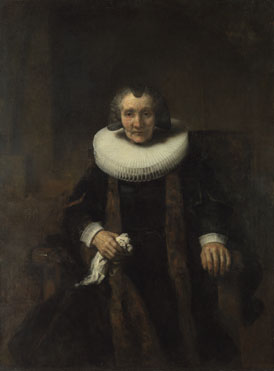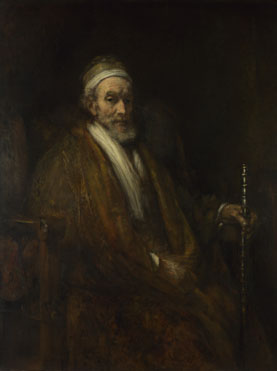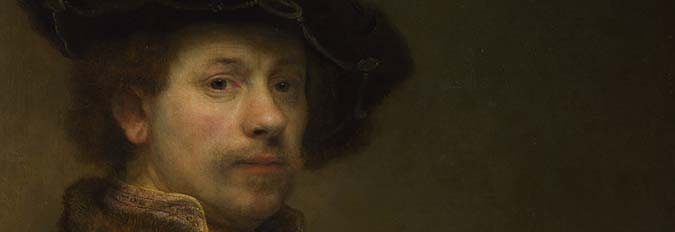Private portraits

This portrait of Margaretha de Geer forms a pair with that of her husband, Jacob Trip. What sense of each half of this couple do you get from their portraits? Does it make a difference whether we see the sitter from the side, or facing us directly? How does the representation of their hands contribute to the impact of each painting?
Margaretha de Geer was in her eighties when she sat for Rembrandt, but her portrait presents her as a formidable woman who was still very much in control. Her hands seem disproportionately large, gripping her chair and handkerchief with grim determination. She seems more substantial than her husband.

Jacob may well have died before the portraits were finished, and his picture might have been made from an existing image of him, rather than from life.
Rembrandt often restricted the range of colours he used to subtle shades of brown, black and white. A limited palette of colours was considered a challenge to the artist's skills, like making an extraordinary meal out of just a few ingredients. Some pigments also darken over time. But what effect does it have on you now? Does it make the subjects depicted seem somehow more serious? Do you find all that brown a bit dull and depressing, or does it focus your attention on the use of light?
By now, Rembrandt had already entered his last decade.

